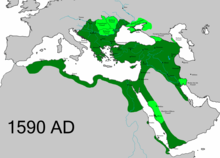This is an old revision of this page, as edited by JMF (talk | contribs) at 16:13, 15 April 2021 (→Hittite Empire: ref after punc, use named refs rather than repeat the citation.). The present address (URL) is a permanent link to this revision, which may differ significantly from the current revision.
Revision as of 16:13, 15 April 2021 by JMF (talk | contribs) (→Hittite Empire: ref after punc, use named refs rather than repeat the citation.)(diff) ← Previous revision | Latest revision (diff) | Newer revision → (diff) State subordinate to another state| This article needs additional citations for verification. Please help improve this article by adding citations to reliable sources. Unsourced material may be challenged and removed. Find sources: "Vassal state" – news · newspapers · books · scholar · JSTOR (November 2016) (Learn how and when to remove this message) |
| Part of the Politics series | ||||||||
| Basic forms of government | ||||||||
|---|---|---|---|---|---|---|---|---|
| List of forms · List of countries | ||||||||
Source of power
|
||||||||
Power ideology
|
||||||||
|
Power structure |
||||||||
|
Related |
||||||||
|
| ||||||||
A vassal state is any state that has a mutual obligation to a superior state or empire, in a status similar to that of a vassal in the feudal system in medieval Europe. The obligations often included military support in exchange for certain privileges. In some cases, the obligation included paying tribute, but a state which does so is better described as a tributary state. Today, more common terms are puppet state, protectorate, client state, associated state or satellite state.
Historical examples
Hittite Empire
Main article: HittitesThe Hittite Empire incorporated vassal states that extended over much of Anatolia and Northern Syria. The addition of vassal states reached its peak under the reigns of Suppiluliuma I and Mursili II in the 14th Century BCE. The relationships between the Hittites and their vassal states centered around the Hittite king and the vassal ruler; the terms of their relationship were imposed unilaterally by the former, and accepted by the latter. Whenever a new Hittite king or vassal ruler came into power, a new treaty would be drawn up.
In rare cases, local rulers were given kiurwana (protectorate status). While they had distinct privileges – such as exemption from tribute – they did not have any more freedom of activity than other vassal states. All relations among the regions under Hittite control were strictly determined by the king.
Ancient China
Main article: Ancient Chinese statesFrom the time of the Zhou Dynasty (1046–770 BC) until the Han Dynasty (206 BC–220 AD), a varying number of vassal states existed in ancient China.
These ranged in size from small city states to vassals which controlled large swathes of territory such as the States of Chu and Qi. One of these vassal states would go on to conquer China and unite the country under the first emperor Qin Shi Huang.
Ottoman Empire
Main article: Vassal and tributary states of the Ottoman Empire
The Ottoman Empire (1299–1923) controlled a number of tributary or vassal states in the peripheral areas of its territory. Vassalage took a number of different forms with some states permitted to elect their own leaders. Other states paid tribute for their lands.
During the 18th century, the Ottoman Empire controlled many vassal and tributary states such as the principalities of Wallachia and Moldavia, or the Crimean Khanate.
See also
- Mandala (Southeast Asian political model)
- Puppet state
- Roman-Persian wars, during which vassal kingdoms played a key role
References
- ^ Bryce, Trevor (2005). "Territories and Early Rivals of the Hatti". Kingdom of the Hittites. Oxford University Press. p. 49–50. ISBN 9780199279081.
External links
 Media related to Vassal states at Wikimedia Commons
Media related to Vassal states at Wikimedia Commons
| Autonomous types of first-tier subdivision administration | |
|---|---|
| Federalism | |
| Unitary state | |
| Unions | |
| Subordinacy | |
| Development | |
| See also | |
This government-related article is a stub. You can help Misplaced Pages by expanding it. |